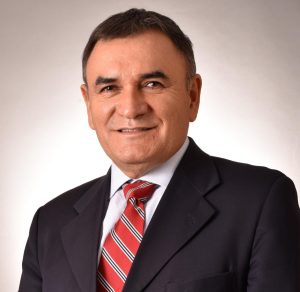By doctors Carolina Rojas (onco-hematologist) and Jorge Gallardo (Medical Oncology Coordinator), INDISA Clinic Physicians Association (AMCI)
As every September 15, the World Health Organization (WHO) commemorates the World Lymphoma Daya date that invites us to reflect on the reality of cancer in our country.
The cancer called lymphoma encompasses a large number of subtypes, with biological variants that have different clinical behaviors and require somewhat different therapies between them. Roughly speaking, “Hodgkin’s lymphomas” (HL) and “non-Hodgkin’s lymphomas” (NHL) are distinguished. In turn, all lymphomas fall within the spectrum of hematological cancers.
According to the WHO Global Cancer Observatory (Globocan) as of 2020, non-Hodgkin’s lymphomas ranked 11th in incidence of malignant tumors after breast, lung, colon, prostate and others. HL, on the other hand, occupies 26th place. From the point of view of mortality, among hematological cancers, leukemia is undoubtedly the most deadly, but NHL comes next, followed by multiple myeloma and HL.
In Latin America and the Caribbean, 7.4% of cancer deaths correspond to lymphomas. In Chile, cancer became the leading cause of death, with approximately 22,000 deaths per year, the main causes being population aging and the change in the population’s disease profile.
In fact, about 40% of cancers are related to unhealthy lifestyles and modifiable risk factors, such as consumption and exposure to tobacco, obesity, alcohol consumption, exposure to toxic substances and infectious agents. Recently, the concept of sexuality has been included, given that the human papilloma virus is the cause of cancer of the cervix, anus, mouth, among others; while the hepatitis C virus is the cause of a type of liver cancer that has increased considerably.
In men, the leading cause of cancer mortality is stomach cancer, followed by prostate cancer, lung cancer, and colon cancer. While in women the first cause of death from cancer corresponds to breast cancer, followed by lung cancer, stomach cancer and gallbladder cancer.
However, there is an even more worrying reality and that is the lymphoma in HIV-infected populationwhere we know that the incidence of non-Hodgkin’s lymphoma is increased 60 to 200-fold in infected patients. Most correspond to aggressive B-lineage lymphomas, especially diffuse large B-cell NHL and Burkitt NHL, which increases the expectations of survival and its quality. Added to this indicator is the fact that during the last decade, Chile became the country with the highest incidence of HIV in South America.
An estimated 100,000 people acquired HIV in Latin America in 2018, an increase of 7% compared to 2010. Approximately half of Latin American countries experienced increases in incidence between 2010 and 2018, with the largest increases in Brazil (21% ), Costa Rica (21%), Bolivia (22%) and Chile (34%).
We know that HIV-infected individuals have increased morbidity and mortality due to cancer, being the third most common cause of death in this groupdespite the high effectiveness of antiretroviral therapy.
During the pandemic period, an even greater increase in HIV infections was observed, and it is estimated that its impact on cancer will be seen in the following years.
From an ethical view of cancer treatment, it is important to rescue the role of the “oncology committee”, a body that brings together interdisciplinary specialists, who evaluate clinical history, and together propose the therapeutic plan according to staging and current protocols.
The committee is the main activity prior to the start of any treatment and therapeutic indication and includes representation from disciplines such as medical oncology, radiation therapy, surgery and palliative care. As or more important than the above is the convenience of patients being treated in hospitals or clinics that have all the specialties of medicine, and certainly with emergency services available at all times, just as it is essential to have units of intensive care, in addition to radiology services, laboratories and online medical record.
For its part, the Organization for Economic Cooperation and Development (OECD) has placed emphasis on ensuring resources and their proper use, on the technical quality of disease management, on the implementation of continuous improvement systems and in the follow-up of goals for the monitoring of processes. This effort of cost effectiveness and opportunity, is the same from the moment of diagnosis until the last moment of treatment or care.
In this aspect, onco-rehabilitation plays a fundamental role in which specialists, therapists and family members participate in order to recover physical and emotional well-being, and should be a guaranteed health right: Before, during and after treatment, positively impacting not only the physical conditions, but also the confidence and self-esteem of the patient with the support of the psycho-oncologists and the family.



